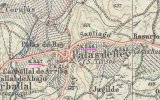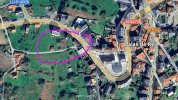Putting
Campo dos Romeiros into Google Search throws up a number of sources that give the impression that there is an exact point or small area where medieval pilgrims gathered. My hunch is that this is misleading.
I put
toponomia campo romeiros palas rei into Google Search and had a look at the first research result, a study or survey of location names in Galicia related to pilgrimage on the
Camino de Santiago. The author writes about
Romeiro (Galician word) and
Romero (castellanized form) that it
could also perfectly be the surname of the owner of the land and could have nothing to do with the Camino path. As an example he refers to O Campo dos Romeiros, the name for "
some fields in Palas de Rei on the C. Francés".
I understand this to mean that it is just a toponym, a local name for some agricultural area, and not a specific location with a proven historic connection to medieval pilgrims.
I did not look at the other sources in the search result list.
David Gitlitz/Linda Davidson write in their book that
the fields just west of Palas, called the Campo dos Romeiros, mark the beginning of the last segment of the 12th-c CC Guide. There is no further information. I guess that later guidebook authors got inspired and imagined this as a place "where pilgrims gathered in groups to go to Santiago together". I severely doubt this as there does not seem to be any evidence for it. I am happy to be corrected of course.





















